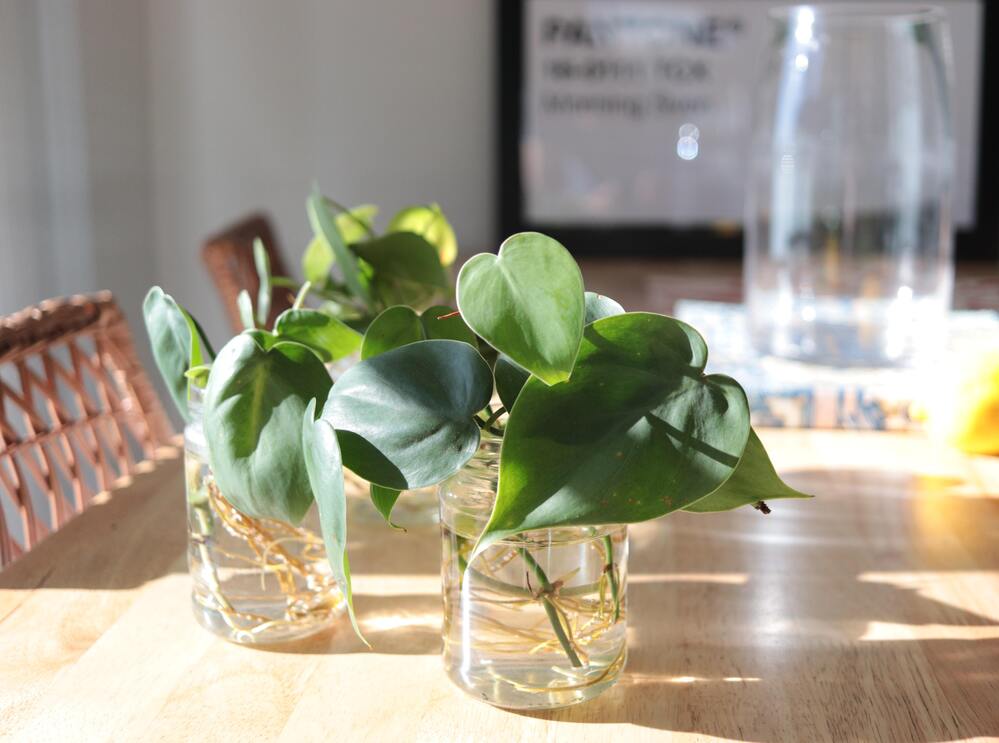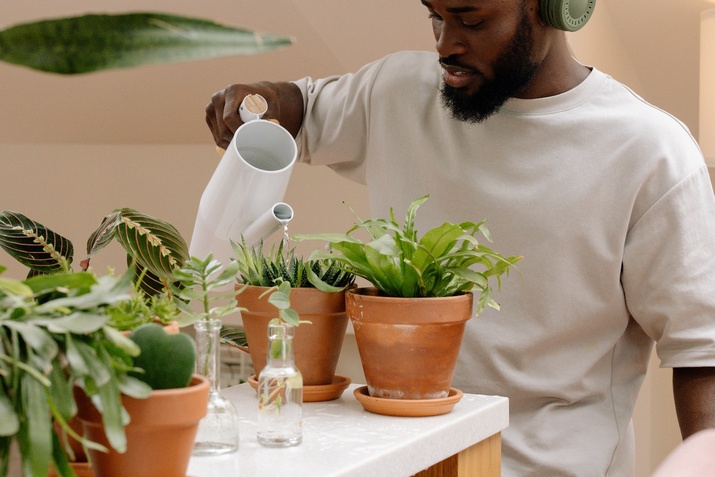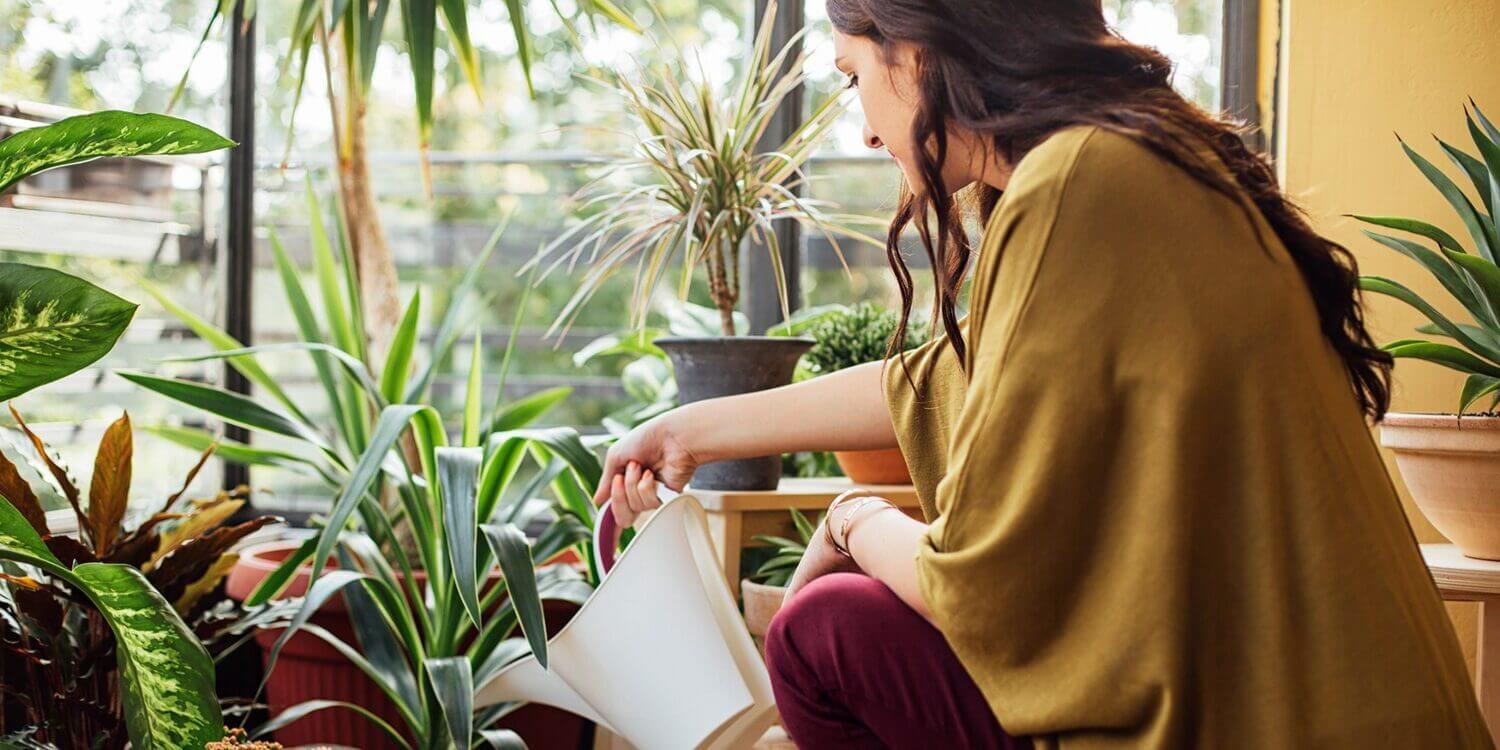Plants are a true blessing of mother nature. They are destined to grow in outdoor environments with a constant flow of water, sunlight, and nutrients to grow and thrive.
Sometimes we want to carry these plants indoors to grow in pots or containers.
Growing plants indoors need special care and attention. They need a balanced amount of sunlight, nutrients, and water.
Enriching houseplants with sunlight and nutrients is easy and straightforward. To do so, fill the pots with potting soil with ample nutrition supply and place them near south or west-facing windows.
But, what about watering indoor plants?
Watering indoor plants isn’t easy. Mastering the art of watering indoor plants is freaking hard. Too much watering causes root rot and fungal attacks and under-watering lead to poor growth, development, and ultimately death.
Therefore, it’s important to understand how to water indoor plants correctly.
Stick with me to the end; in this article, I’ll discuss how to water indoor plants so that you can master the art of watering indoor plants. Without further ado, let’s begin!
Role of water in the lifecycle of houseplants:

Have you ever chopped vegetables or squeezed herbs? Don’t they protrude water?
Indoor plants are living entities. They need water to grow and thrive. Plants prepare their food through a process called photosynthesis. To carry out photosynthesis, indoor plant needs two things: water and carbon dioxide.
The plants absorb water through roots and carbon dioxide through stomatal cells.
Each leaf contains special cells known as chlorophyll.
Chlorophyll captures sunlight energy and combine water and carbon dioxide to create units of sugar and oxygen.
Plants use sugar to grow and sustain their life and release oxygen to the atmosphere which is important for the sustainability of the ecosystem. Apart from photosynthesis, water has the unique ability to absorb nutrients from the soil and take them up to the plant whole system. These nutrients are used by plants to perform various important functions.
Moreover, plants life and death depend on the availability of water in the root section. Plants absorb water through roots and pump upwards to fill up plants’ cells, powering their fibers to procure strong stems and leaves. Tip: Fill your pots with porous soil because it helps plants to uptake water and oxygen easily.
All in all, water is the baseline of all living entities.
Why it's important to correctly water your plants?

With water, there are three possible scenarios: too much, too little, and, of course, just balanced.
-
If the potting soil has too much water, root rot starts to happen and oxygen supply to the plant system diminishes considerably.
-
Plants with access to too little supply of water can pose problems regarding oxygen supply and nutrients locomotion to the upper section of the plants.
-
Further, when plants are stressed with too much or too little supply of water, overall growth and development reduces significantly.
To maintain the overall health of the indoor plants and the functioning of roots, it’s important to make sure the plant is getting a balanced amount of water.
How to check the water content in the soil?

Checking the soil for a healthy supply of water isn’t that tricky. There are a few simple things and tricks you can do to check the availability of water in the root section of the plant.
-
If the houseplant has less exposure to sun and heat, then less water is required.
-
In the spring and summer seasons, when plants are in the growth and flowering stage, ensure to supply ample amount of water. On the other hand, in dormant seasons, autumn and winter, plants generally require less supply of water for their maintenance.
-
Further, the amount of water supplies your plants require depends on the plant type it is and the container it’s in.
To test the water content in the potting soil, follow the following tricks:
Finger test
The finger test starts with the index finger. Dip your index finger at least 2 inches into the potting soil. If the top two inches of soil feels dry to your finger, it’s a sign that your houseplant needs water.
Plant signs
Houseplants show various signs when they need water. They act differently when they need or don’t need water. Your main task is to look out for those signs. When the houseplants need water, they may appear droopy and get crispy or curl. If they are getting high doses of water, they turn yellow.
Water drainage
Water drainage tells you a lot about over-watering or under-watering. If water is draining from the bottom of the pot, it’s a sign of indoor plants having enough water. The houseplants will soak up some of the drained water but too much water drainage shows plenty of water supply.
What are the best watering strategies?
Not all indoor plants are the same when it comes to their watering needs. Some houseplants are heavy feeders, others don’t need water for weeks or even months, and many are in-between.
Before applying water, it’s important to know the watering needs of each indoor plant and check “where each specific species fall on the water spectrum”.
Next, don’t forget to look out for the following variables:
- Light exposure
- Potting medium
- Temperature
- Atmospheric humidity
- Dormant seasons vs. non-dormant seasons (Make sure to add ample amount of water during nor-dormant seasons – spring and summer – then dormant seasons – autumn and winter – where overall growth and development ceases).
- Hanging houseplants vs. sitting. (Hanging houseplants need more water than sitting or flat ones).
Tip #1
Water each houseplant slowly and evenly.
Tip #2
Check the water content by dipping a stick or your index finger into the potting soil.
If the top two inches layer feels dry, try adding tepid water. Don’t bathe the soil with too cold or too hot water. It’s best to add lukewarm water to the soil.
Tip #3
Next time, when you add water to each pot evenly – and all soil is moistened evenly – try lifting it up and notice how heavy it feels to your hands.
As time passes, every two or three days, try lifting the pot and you may notice how less heavy and lighter it feels to your hands and arms.
As you practice this simple watering method, you’ll be able to tell when to water your indoor plants by just lifting the pots.
Tip #4
Always add water to the potting soil from the bottom.
This method reduces the chances of root rot occurrence and ensures the bottom roots are getting water as well. Also, it's a great natural way of promoting roots growing down.
Tip #5
Fill up your pots with lukewarm clean water.
It’s best to avoid adding softened water. Softened water contains a lot of salts. These salts accumulate in the root zone and reduce the water uptake ability of roots.
Conclusion
Plants other than heavy feeders must not be watered frequently. Waiting until the top two inches of potting soil doesn’t turn dry is a good approach.
Commercially available potting soil water tester or meters can help you a lot with testing the potting soil moisture. However, the conventional and true method of dipping your index finger into the soil is the most dependable.
With time and experience, you can check the moisture content by lifting pots in your hands and thus soil need for water.
Lastly, it’s very important to thoroughly saturate the potting soil
